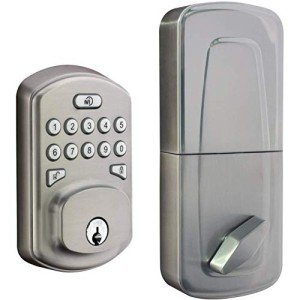The 10 Most Popular Pinterest Profiles To Keep Track Of Buy Energy-Efficient Lighting UK
Buy Energy-Efficient Lighting in the UK: A Comprehensive Guide
Recently, the seriousness of transitioning to more sustainable habits has led many customers and businesses to make conscious choices about their energy consumption. One of the most impactful ways to decrease energy expenses and carbon emissions is by going with energy-efficient lighting. Buy Under Cabinet Lighting UK intends to notify readers about the advantages of energy-efficient lighting, types available in the UK market, and pointers for making a choice.
Comprehending Energy-Efficient Lighting
Energy-efficient lighting describes source of lights that consume less electrical power while supplying the very same level of lighting as traditional lighting options. This decrease in energy usage originates from developments in innovation, which have actually allowed the development of lighting services that not just conserve energy but are also more resilient and versatile.
Advantages of Energy-Efficient Lighting
Expense Savings: Lower energy expenses make energy-efficient lighting an attractive option for both households and businesses. They may include a higher preliminary investment, but their longevity and reduced energy intake lead to substantial cost savings gradually.
Ecological Impact: By utilizing less electrical energy, energy-efficient lights add to decrease greenhouse gas emissions. The shift far from nonrenewable fuel sources for electricity generation makes a significant distinction in mitigating environment modification.
Improved Light Quality: Modern energy-efficient lighting, especially LED and CFL, uses brighter, more constant light than older innovations like incandescent bulbs.
Types of Energy-Efficient Lighting
When exploring energy-efficient alternatives, consumers can pick from various innovations. Here are some common types discovered in the UK:
Type
Energy Usage
Life-span
Qualities
LED (Light Emitting Diode)
Very low
15,000 – 50,000 hours
Instant-on, dimmable alternatives readily available, high light quality
CFL (Compact Fluorescent Lamp)
Low
7,000 – 15,000 hours
More energy-efficient than incandescent, but might require time to reach complete brightness
Halogen Bulbs
Moderate
2,000 – 4,000 hours
Enhanced efficiency compared to traditional incandescent; emits a warm light
Smart Bulbs
Differs based on usage
15,000 hours
Links to smart home systems; programmable and energy trackers
This range invites consumers to make informed choices customized to their requirements.
How to Choose Energy-Efficient Lighting
Selecting the right energy-efficient lighting can appear intimidating due to the various choices available. To streamline the decision-making procedure, prospective purchasers ought to consider the following aspects:
Purpose of Lighting: Identify the primary use of the lighting (e.g., ambient light, task lighting, or accent lighting) to identify the suitable type and intensity of light.
Lumens vs. Watts: Understand that lumens show brightness while watts step energy intake. The objective is to maximize lumens while lessening wattage.
Color Temperature: Lighting can be found in numerous color temperature levels, expressed in Kelvin (K). Consider the desired atmosphere:
- Warm White (2700K) for comfortable locations
- Cool White (4000K) for offices
- Daylight (5000K+) for vibrant settings
Dimming Capabilities: If picking LED or CFL lighting, guarantee that the fixtures and bulbs work with dimmer switches if that is a requirement for the area.
Certification Labels: Look for energy efficiency labels such as the Energy Saving Trust label or EU Energy Label, which show compliance with energy use requirements.
Where to Buy Energy-Efficient Lighting in the UK
Customers in the UK can acquire energy-efficient lighting from various retailers. Some popular choices consist of:
- Online Retailers: Websites such as Amazon, eBay, and specialist lighting websites frequently have a broad choice and competitive costs.
- Home Improvement Stores: Chains like B&Q, Wickes, and Homebase offer in-store assistance for consumers to make informed options.
- Electrical Suppliers: Stores that concentrate on electrical items can provide professional guidance customized to particular requirements, specifically for commercial purchasers.
FAQs about Energy-Efficient Lighting
Are energy-efficient bulbs actually worth the investment?
- Yes, while the in advance expense might be greater compared to traditional bulbs, their durability and lower energy consumption deal substantial savings in the long run.
Do energy-efficient bulbs require time to reach full brightness?
- Some types, like CFLs, might take a few minutes to heat up, while LEDs supply immediate brilliant light.
Can I utilize energy-efficient bulbs in existing fixtures?
- Many energy-efficient bulbs can be utilized in standard fixtures, but constantly inspect compatibility, particularly with dimmer switches.
What ecological benefits can I get out of using energy-efficient lighting?
- Decreased energy usage causes a lower demand for electrical power, which decreases greenhouse gas emissions, thus having a positive effect on environment modification.
Changing to energy-efficient lighting not only helps to reduce electrical power expenses but likewise contributes to a greener planet. By comprehending the types readily available, knowing what to look for when making a purchase, and checking out reputable suppliers, UK customers can make well-informed choices that align with their requirements. This little change can lead to considerable benefits for both their home or organization and the environment.
Last Thoughts
As consumers end up being progressively familiar with their environmental footprint, the switch to energy-efficient lighting is an essential step. By embracing these technologies, people and services in the UK enhance their sustainability efforts while delighting in the advantages of modern lighting solutions.
